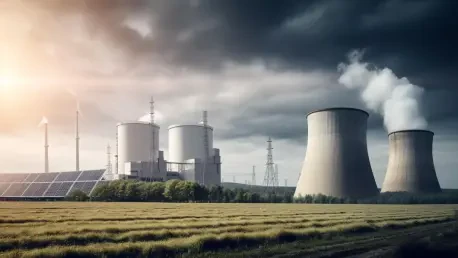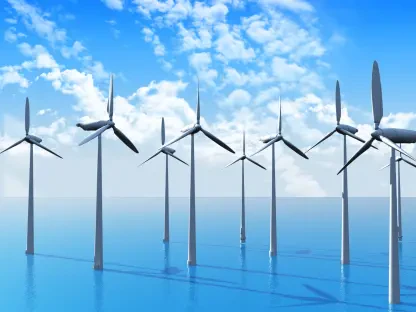Overview of Duke Energy and the Carolinas Energy Landscape
In the heart of the Carolinas, where economic vitality pulses through expanding industries and burgeoning communities, Duke Energy stands as a cornerstone of power provision, serving 4.7 million customers across a sprawling 52,000 square miles. Headquartered in Charlotte, North Carolina, this energy giant operates through its key subsidiaries, Duke Energy Carolinas and Duke Energy Progress, ensuring electricity reaches homes and businesses in both North Carolina and South Carolina. The company’s extensive infrastructure and strategic planning are critical as the region experiences rapid growth, positioning Duke Energy at the forefront of addressing escalating energy needs.
The energy sector in the Carolinas is currently characterized by robust economic development, particularly in North Carolina, which ranks as a top state for business expansion. This growth fuels an unprecedented surge in electricity demand, driven by industrial investments and population increases in urban and suburban areas. South Carolina, too, sees similar trends with manufacturing and technology sectors driving consumption, creating a dynamic landscape where energy providers must innovate to keep pace with demand while maintaining grid stability.
Technological advancements and regulatory frameworks play pivotal roles in shaping Duke Energy’s operational strategies. The push for cleaner energy sources, coupled with state and federal policies, influences how the company plans its resource mix, from integrating renewable technologies to upgrading existing facilities. As a leader in the region, Duke Energy navigates these complexities to balance sustainability goals with the immediate needs of a growing customer base, setting the stage for a transformative approach to energy delivery.
Key Trends and Strategies in the Carolinas Resource Plan
Emerging Trends in Energy Demand and Solutions
The Carolinas are witnessing an extraordinary rise in electricity demand, largely propelled by economic progress and industrial expansion, with North Carolina leading as a hub for business innovation. Major investments in manufacturing and technology sectors have spurred job creation, necessitating a reliable power supply to support new facilities and infrastructure. This trend underscores the urgency for Duke Energy to adapt swiftly to a landscape where energy consumption patterns are shifting dramatically.
To address this, Duke Energy employs a diversified energy mix strategy that incorporates nuclear power, natural gas, solar installations, and battery storage solutions. This approach not only ensures reliability across varying demand scenarios but also aligns with federal and state policy incentives aimed at promoting cleaner energy. The integration of renewable sources, supported by tax credits, reflects a commitment to reducing carbon footprints while meeting customer expectations for sustainable practices.
Moreover, opportunities for adopting advanced technologies, such as small modular reactors (SMRs) in the nuclear sector, are being explored to enhance capacity without the extensive footprint of traditional plants. These innovations, alongside a focus on solar expansion, position Duke Energy to capitalize on cleaner energy adoption trends. The strategic blend of traditional and emerging resources highlights a proactive stance in tackling the region’s energy challenges.
Growth Projections and Performance Metrics
Projections indicate that energy demand growth in the Carolinas will be significantly higher over the next 15 years compared to previous periods, driven by industrial and residential expansion. This accelerated pace, estimated to be eight times greater than past trends, necessitates substantial investments in infrastructure to prevent supply shortfalls. Duke Energy’s planning accounts for this surge by outlining specific timelines for capacity additions to meet future needs.
Customer bill impacts are forecasted to remain manageable, with an average annual increase of 2.1%, a rate below inflation, ensuring affordability remains a priority. Additionally, potential savings from combining utility operations are projected to exceed $1 billion, offering long-term cost benefits to consumers. These financial strategies are designed to cushion the economic burden on customers amidst rising demand.
Looking ahead, Duke Energy plans to bolster its grid with significant resource additions, including 4,000 megawatts of solar power and 5,600 megawatts of battery storage by the next decade. These targets, set to be achieved through phased implementations starting from the current year, aim to enhance energy security and support the transition to a more resilient power system. Such forward-thinking metrics underscore the company’s dedication to sustainable growth in the region.
Challenges in Meeting Energy Demands
Addressing the rapid load growth in the Carolinas presents a formidable challenge for Duke Energy, as it must balance reliability with affordability for millions of customers. The surge in demand, driven by economic booms, strains existing infrastructure, requiring meticulous planning to prevent outages or service disruptions. This balancing act is central to maintaining trust and operational integrity in a high-stakes environment.
Operational hurdles further complicate the scenario, with an interim reliance on fossil fuels like natural gas and short-term extensions of coal units becoming necessary to bridge immediate gaps. While these measures ensure continuity of service during peak demand periods, they pose environmental concerns and require careful management to align with long-term sustainability objectives. The temporary use of such resources highlights the complexity of transitioning to a cleaner grid under tight timelines.
To mitigate these issues, Duke Energy is leveraging existing assets through efficiency upgrades, enhancing output without the immediate need for new construction. Additionally, strategic timing of new resource additions aims to minimize costs associated with grid enhancements. These tactics, combined with a focus on scalable solutions, offer a pathway to navigate current challenges while laying the groundwork for future stability in energy provision.
Regulatory Environment and Policy Impacts
The regulatory landscape significantly shapes Duke Energy’s resource planning in the Carolinas, with state policies prioritizing grid reliability amidst growing demand. North Carolina and South Carolina have established frameworks that mandate a stable power supply, influencing how the company allocates resources and schedules retirements of older facilities. These state-level directives provide a structured backdrop for operational decisions.
Federal incentives, including tax credits for renewable energy and nuclear advancements, further guide the company’s strategic investments. Recent legislative changes, such as relaxed restrictions on coal usage, have allowed for short-term extensions of certain units to meet immediate needs, reflecting a pragmatic response to policy shifts. This flexibility enables Duke Energy to adapt to changing expectations while maintaining service continuity.
Commitment to compliance remains evident as Duke Energy aligns with state-approved timelines for coal retirement, ensuring a gradual exit from high-emission sources. The company’s ability to navigate this evolving regulatory environment, balancing immediate operational needs with long-term environmental goals, demonstrates a nuanced approach to policy adherence. Such alignment fosters collaboration with regulators and stakeholders to secure a sustainable energy future.
Future Outlook for Duke Energy in the Carolinas
Envisioning the long-term trajectory, Duke Energy is steering toward a balanced energy portfolio in the Carolinas, emphasizing increased capacity in nuclear, solar, and storage systems. This diversified approach aims to reduce dependency on any single source, enhancing resilience against market fluctuations and policy changes. The focus on expanding low-carbon options signals a transformative shift in regional energy dynamics over the coming years.
Potential disruptors, such as breakthroughs in small modular reactor technology and the economic feasibility of wind power, are under continuous evaluation for integration into future plans. These innovations could redefine capacity strategies, offering scalable solutions to meet demand spikes. Regular reassessment of such technologies ensures Duke Energy remains at the cutting edge of energy production methodologies.
Global economic conditions and customer preferences for affordable energy will also influence growth areas, alongside ongoing policy developments at state and federal levels. As industries in the Carolinas expand, the demand for cost-effective power solutions will drive investment priorities. Duke Energy’s adaptability to these external factors will be crucial in shaping a robust and responsive energy framework for the region.
Conclusion and Strategic Recommendations
Reflecting on the comprehensive strategies laid out by Duke Energy, the approach to meeting the Carolinas’ energy demands showcases a blend of innovation and pragmatism. The detailed planning around diversified resources, from nuclear to solar, highlights a dedication to reliability that underpins economic progress in the region. Challenges like interim fossil fuel reliance are tackled with a clear eye toward eventual transition, ensuring that short-term solutions do not derail long-term sustainability goals.
Moving forward, stakeholders should prioritize deeper collaboration on policy frameworks to streamline the adoption of cleaner technologies, ensuring regulatory support matches technological ambition. A continued emphasis on customer-centric cost strategies, such as leveraging federal incentives and utility consolidation savings, will be vital to maintain affordability. Finally, sustained investment in a diversified energy mix, particularly in scalable solutions like battery storage and advanced nuclear options, should guide future efforts to secure a resilient and sustainable power landscape for the Carolinas.









